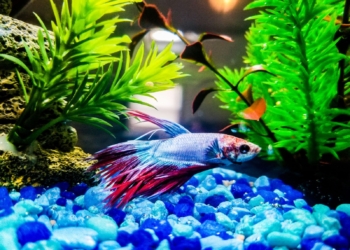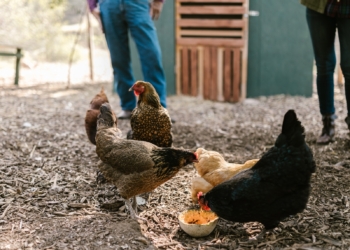As a cat owner, knowing what foods are safe for your furry friend to eat is important. While some human foods can be toxic to cats, others may provide nutritional benefits. Spinach is one such food that has been discussed among cat owners.
In this article, we will provide an overview of spinach, its nutritional value, and the potential benefits and risks of feeding it to your cat.
What Is Spinach and Why Is It Considered a Superfood?
Spinach is a green leafy vegetable rich in vitamins, minerals, and antioxidants. It’s considered a superfood because it contains high levels of nutrients and is beneficial for overall health. Spinach is an excellent source of vitamin A, vitamin C, vitamin K, iron, calcium, and magnesium.
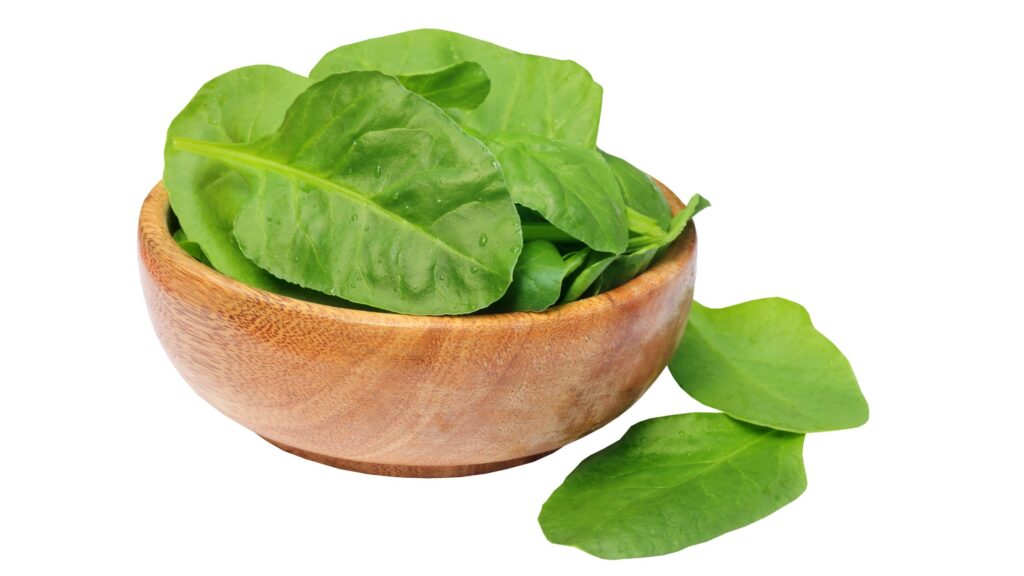
Nutritional Value of Spinach
Spinach is a nutrient-dense food that provides a range of minerals and vitamins essential for good health. Here is a division of the nutritional value of spinach per 100 grams:
- Calories: 23
- Protein: 2.9 grams
- Fat: 0.4 grams
- Carbohydrates: 3.6 grams
- Fiber: 2.2 grams
- Vitamin D: 0% of the Daily Value (DV)
- Vitamin C: 46% of the DV
- Vitamin B6: 10% of the DV
- Iron: 15% of the DV
- Calcium: 9% of the DV
- Magnesium: 19% of the DV
Can Cats Eat Spinach?
Yes, cats can eat spinach, but it’s not a necessary part of their diet. Spinach is safe for cats to eat in small amounts, but it’s important to introduce it slowly and in moderation.
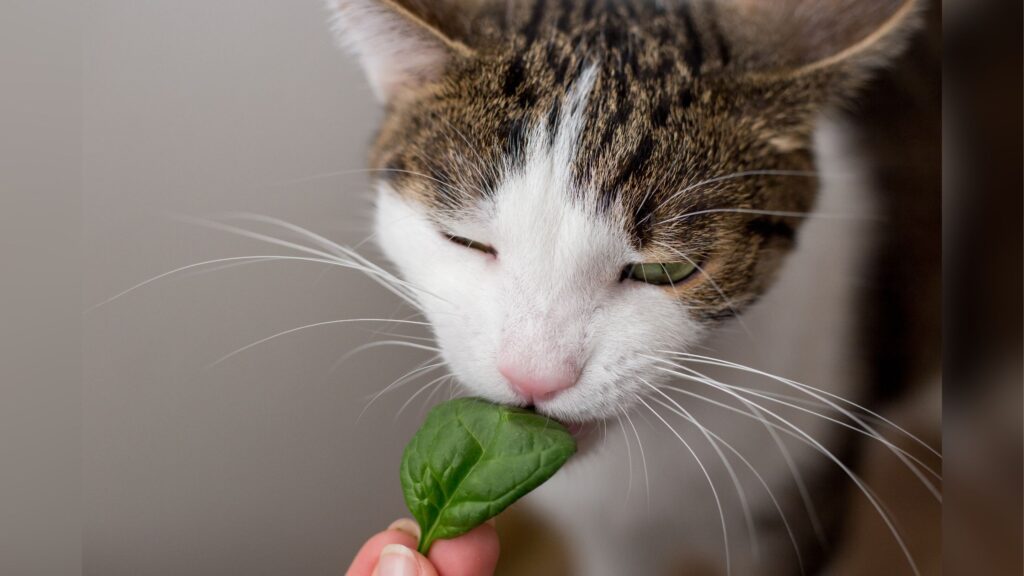
While spinach does contain some beneficial nutrients, it also comes with potential risks, such as digestive upset or urinary tract issues in some cats if fed in large amounts.
Additionally, spinach contains oxalates, which can interfere with the absorption of other important minerals like iron and zinc, potentially leading to nutrient deficiencies.
If you decide to feed your cat spinach, a few small leaves or a teaspoon of pureed spinach mixed into their food should suffice. It’s also important to remember that alternative leafy greens are safe and nutritious for cats, such as kale, romaine lettuce, and arugula.
Cooked or Raw Spinach – Which is Better?
While cats can eat both cooked and raw spinach, raw spinach is generally a better option as it retains more of its beneficial nutrients. Cooking spinach can cause some of the nutrients to break down or be lost, which can reduce its nutritional value.
However, if your cat doesn’t enjoy the taste or texture of raw spinach, lightly steaming or boiling it can make it more palatable.
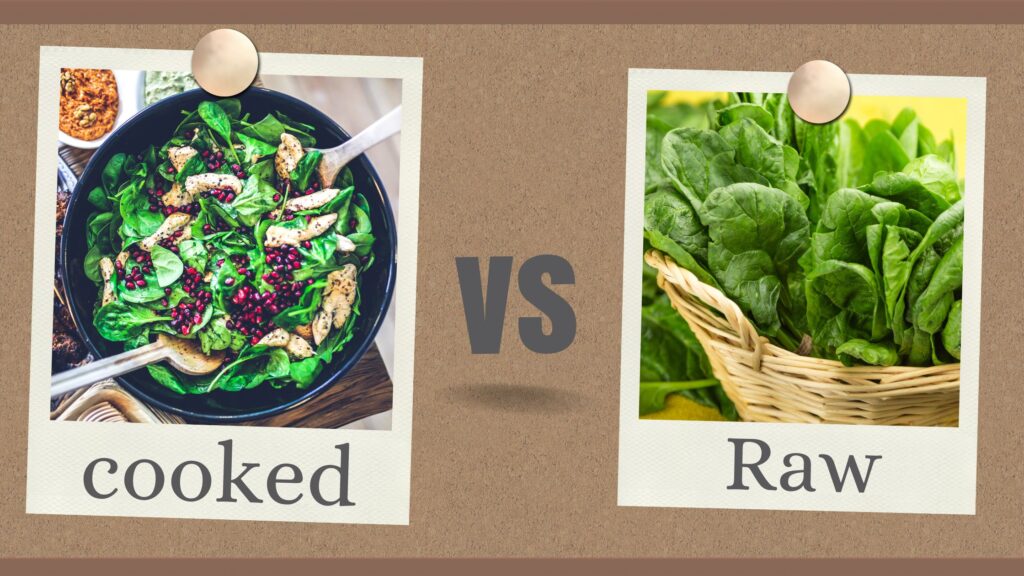
Potential Benefits of Spinach for Cats
Spinach contains a range of nutrients that may provide some benefits for cats. Here are some potential benefits of feeding spinach to your cat.
1. Boosts Immune System
Spinach is high in antioxidants, which help to boost the immune system. It also protects the body against disease.
2. Promotes Healthy Vision
Spinach is a good source of vitamin A, which is essential for maintaining healthy vision.
3. May Help with Digestion
Spinach is rich in fiber, which can help to promote healthy digestion and prevent constipation.
4. Promotes Healthy Skin and Coat
The vitamins A and C in spinach can help to promote healthy skin and coat in cats.
Potential Risks of Feeding Spinach to Cats
While spinach is not toxic to cats, some potential risks are associated with feeding it to your furry friend. Here are some things to consider.
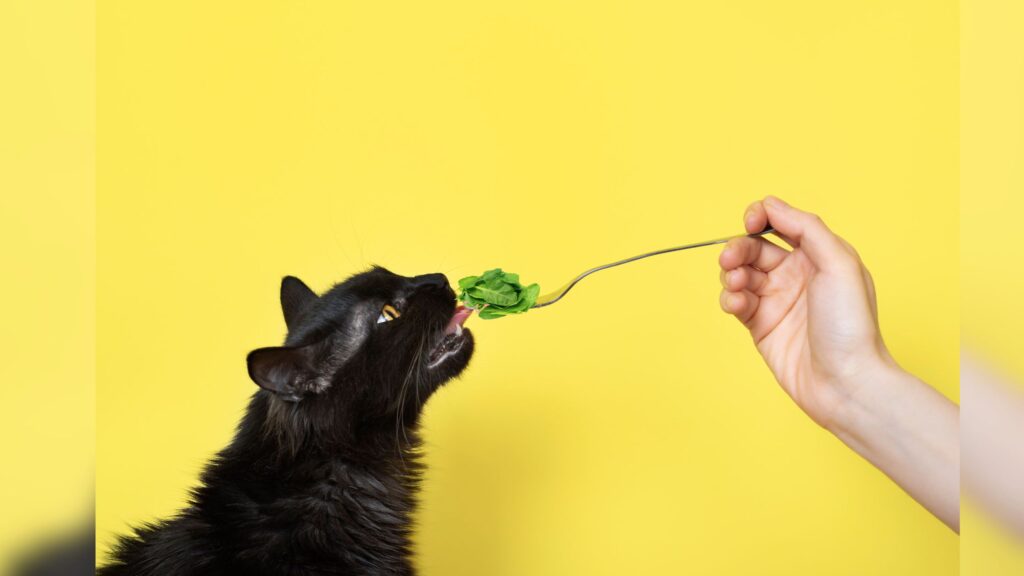
1. Digestive Issues
Spinach contains oxalates, which can bind with calcium and cause urinary tract issues in some cats. Additionally, too much spinach can cause digestive upset, such as vomiting or diarrhoea.
2. Interference with Nutrient Absorption
Spinach contains high levels of calcium, which can help with the absorption of other important minerals like iron and zinc. This can potentially lead to nutrient deficiencies if your cat eats too much spinach.
3. Allergic Reactions
It is very rare that some cats may be allergic to spinach, which can cause symptoms like itching, swelling, or difficulty breathing.
How Much Spinach Can Cats Eat?
While spinach is safe for cats to eat in small amounts, it’s not necessary for their diet. If you decide to feed your cat spinach, it’s important to do so in moderation.
A good rule of thumb is to offer spinach as an occasional treat rather than as a regular part of their diet. A few small leaves or a teaspoon of pureed spinach mixed into their food should suffice.
Other Leafy Vegetables That Are Safe for Cats
If you’re looking for alternative leafy greens to offer your cat, there are a few other options that are safe and nutritious. These include Kale, Romaine lettuce, Arugula, and Collard greens.
Final Verdict
While cats can eat spinach, it’s not a necessary part of their diet. Usually, Cats can go without food for as long as two weeks, and they can eat other food as well. As with any new food, it’s important to introduce spinach slowly and in small amounts to see how your cat reacts.
FAQs
- Can spinach be toxic to cats?
No, spinach is not toxic to cats, but it can cause digestive upset or urinary tract issues in some cats if fed in large amounts.
- Is it safe to feed my cat spinach every day?
No, it’s not recommended to feed your cat spinach every day as it’s not necessary for their diet and can interfere with the absorption of other important minerals.
- Can spinach help with hairballs in cats?
While spinach contains fiber which can help with digestion, there is no evidence that it specifically helps with hairballs.
- Can cats eat cooked spinach?
Yes, cats can eat cooked spinach, but raw spinach is a better option as it retains more of its nutrients.
- Are there any other vegetables that cats can eat?
Yes, there are a few other vegetables that are safe for cats. These vegetables must be eaten in moderation, including kale, romaine lettuce, and arugula.





